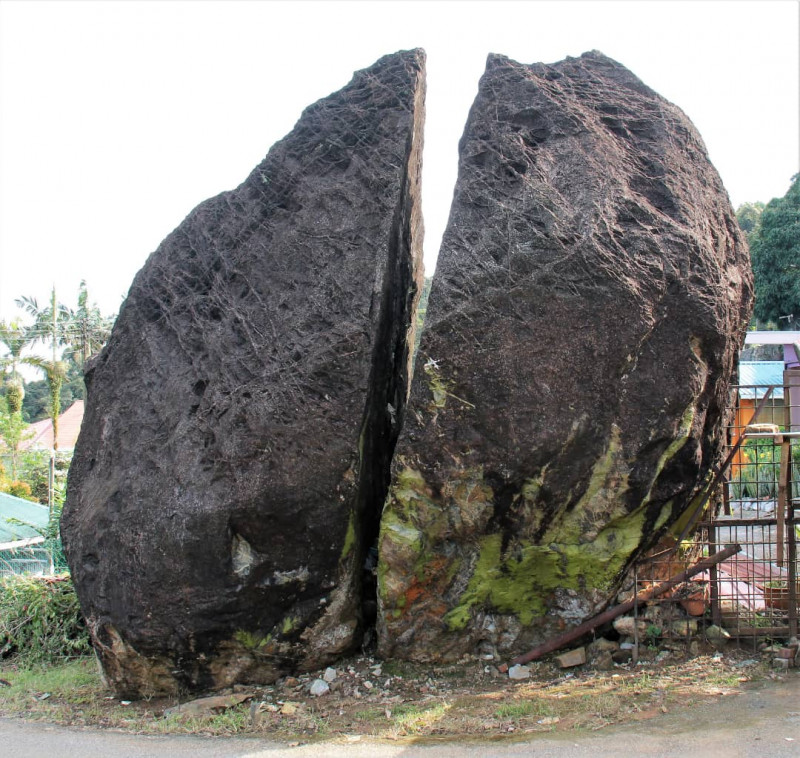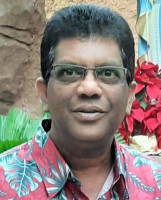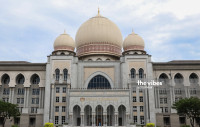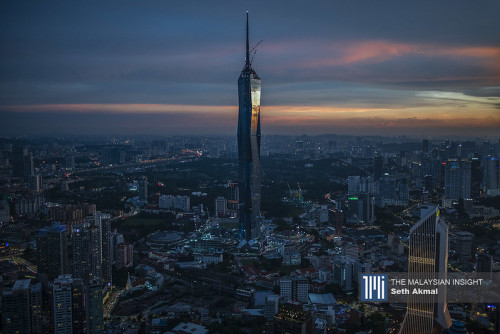IT is perhaps Sarawak’s earliest organised village, thanks to the evangelical zeal of Anglican missionaries to Sarawak. The iconic Bidayuh heartland 20 miles south of Kuching was originally called Kampong Kuap by its first settlers in the mid-1800s.
The settlers had migrated from old Siburan’s Gunung Sintah. Led by warrior-chief Bai Mandai, they were in search of greener pastures and wanted to escape the marauding pirates there.
After the long trudge through virgin jungle, Bai Mandai’s exhausted followers cooked up a colossal meal, ate and slept – but not before each one of them simultaneously expressing a long stretch of a yawn out of utter fatigue.
That is how Bai Mandai’s first settlement on the hillock (now Quop Hill) came to be called Kampong Kuap, which means “yawn” in Bidayuh and Malay. But, in later years James Brooke’s gospel bearers re-spelt it as Kampong Quop.
Today, the 170-year-old settlement with a population of 3,000 is officially “Kampong Quop”. It is under the jurisdiction of the Kota Padawan Municipal Council.
It is here, where the able and creatively-talented, Bonita Andrew, holds court as the first woman ketua kampung (village chief). A female ketua kampung? Yes, and that is coming a long way from Bai Mandai and his first all-male tribal council.
Bonita is looking forward to preserving Kampong Quop’s old-world charm, its quaint history and peculiar lifestyle traditions. She will also launch initiatives to uplift lives through effective social development projects.


Like most of us, Bonita believes living heritages are signposts of history.
“We cannot ignore them, but must strive to preserve them,” Bonita tells The Vibes.
“I have a dedicated team in my Village Development and Security Committee (JKKK) and have set up a sub-committee within to take charge of matters on the village’s history and heritage.”
Bonita’s team consists of Moding Munan, Mathew Spencer, Gerald Wah Onn, Gordon Jae Lon and Simon Jaboh.
They are all ready and raring to give the historic village a makeover.
More interestingly, Bonita’s footmen are seeking to gain heritage status for Kampong Quop’s iconic landmarks. There is the St James Anglican Church and the long-neglected Batu Tipire – a geological phenomenon known in its English moniker as “The Split Rock of Kampong Quop”.
Geomorphic landmark
There is something arrestingly bizarre about Batu Tipire, dressed as it is, in its inky black coat. Strangely, Batu Tipire has a distinct fissure in the middle, as if it was neatly sliced into two parts by someone with a preternatural knife.
“However, the villagers believe that the hulking twinned-monolith was not actually 'sliced' but it is a seraphic couple – the left boulder being the male, and the one on the right its female companion,” says Gordon.
“Standing 17 feet high at its highest point and 18 feet across, both the male and female boulders are seen tilting approximately 20° to the right,” notes Gordon.
At one glance, Batu Tipire’s tilt to the right is quite reminiscent of some ancient leaning megaliths.
But humped in its majestic silence, this piece of arcane mystery located just outside the gates of St James Church holds a story of its own.
Legend behind Batu Tipire
According to Moding, after Bai Mandin and his followers established a settlement on Quop Hill, one of his descendants, Bai Rimau, had strayed away deep into the jungle. Just as he realised he was lost, a torrent of hujan panas (hot rain) lashed down from the skies.
“When it rains hujan panas, it is an unfavourable moment according to tribal lore, because that is when bad spirits come out to cause mischief. Bai Rimau hurriedly sought shelter and ended up staring face to face with the two huge boulders of rock. Bai Rimau took shelter under the concave underside of Batu Tipire’s right half,” adds Moding.
According to him, after having found his way home, Bai Rimau had a dream that night where the friendly guardian spirits (penunggu) of Batu Tipire cajoled him into establishing a new settlement close to their abode.
“Months followed and two disasters struck the settlement on Quop Hill. The first, a cholera outbreak, followed by a smallpox epidemic which took the lives of many of the settlers on the hill. Sensing this to be a bad omen, Bai Rimau then led his remaining followers to the site near Batu Tipire.
"Here, they set up their first longhouse from where Kampong Quop came to be.”
All was well and life was moving at a snail’s pace at the village. They hunted, sowed and reaped paddy as well as planted durian trees. They are known till today as ‘Sarawak’s Musang King’ and tagged by the State Agriculture Department as the DG25 series.

The villagers also lived their animist traditions, believing that objects, places, rocks, rivers, trees and even the day’s weather possessed an inherent spiritual essence.
“Batu Tipire was, of course, the centre of focus. It was where they performed rituals and offered sacrifices (bergawai) as an appeasement to the guardian spirits,” says Moding.
Meanwhile, at about this time, too, the Anglican brand of Christianity grew in fervour. No sooner, missionaries were knocking at the doors of Kampong Quop’s peasantry. Hordes of them were baptised, and in 1865 the Church of St James was built just a few steps away from Batu Tipire.
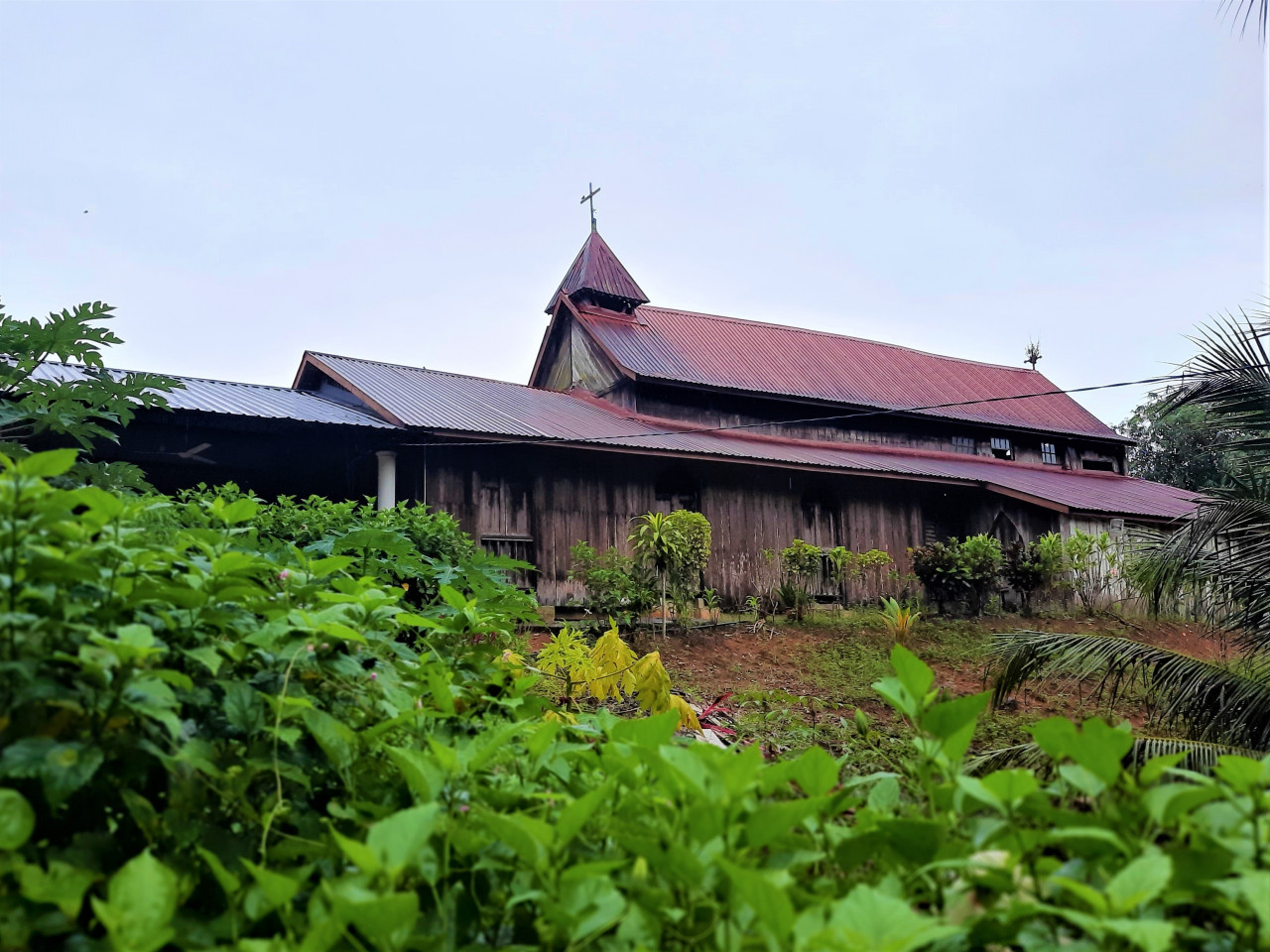
Being Christians now, the villagers stopped paying homage to the guardian spirits of Batu Tipire and eventually shifted their focus to the tabernacle at St James.
Encounters of a strange kind
Following this shift of attention from Batu Tipire to the altar at St James, strange happenings manifested in the village. This was witnessed by the newly baptised Christians and the clergy at St James Church.
“Deprived of worship and sacrifice, the guardian spirits purportedly expressed their disappointment,” says Simon. “The first sign of trouble was felt during funeral processions to the cemetery located a short distance from Batu Tipire.”
Mathew Spencer explains further, saying that pallbearers carrying the corpse on a wooden bier felt the dead person borne on their shoulders became unusually heavier as they neared Batu Tipire. So much so, extra hands were needed to carry the body to the burial site.
.jpg)
In his autobiography, 'In a Fair Ground', the late assistant bishop of Kuching, Peter H.H. Howes, has recorded some spooky experiences he had had as a young pastor at St James.
“Sometimes at night, there were domestic echoes from the site, such as the clink of pots and pans, the chopping of wood, the sound of gongs and snatches of people in conversation. Each sound made a distinct impact, with a curious resonance as though reflected from a cave.
“It was so clear, so normal that one felt certain that it must come from a house near the site, perhaps someone hosting a private party. Yet there was never a glimmer of a light to be seen and no sound of activity from the living, as one looked out from the mission house verandah.
“When you asked the following morning if there had been a party in the village, the answer was always: ‘No, it was our grandparents you heard. This was in every sense an alarming experience. It was a phenomenon to which a great many can bear witness,” Howes attested.
Adding on, Howes said more startling were the sounds that occasionally emanated from the direction of St James. He said it sounded as though the plank walling was being struck hard with a stick. According to him, two or three blows were struck at a time, followed by a minute or two of silence and then more blows followed.
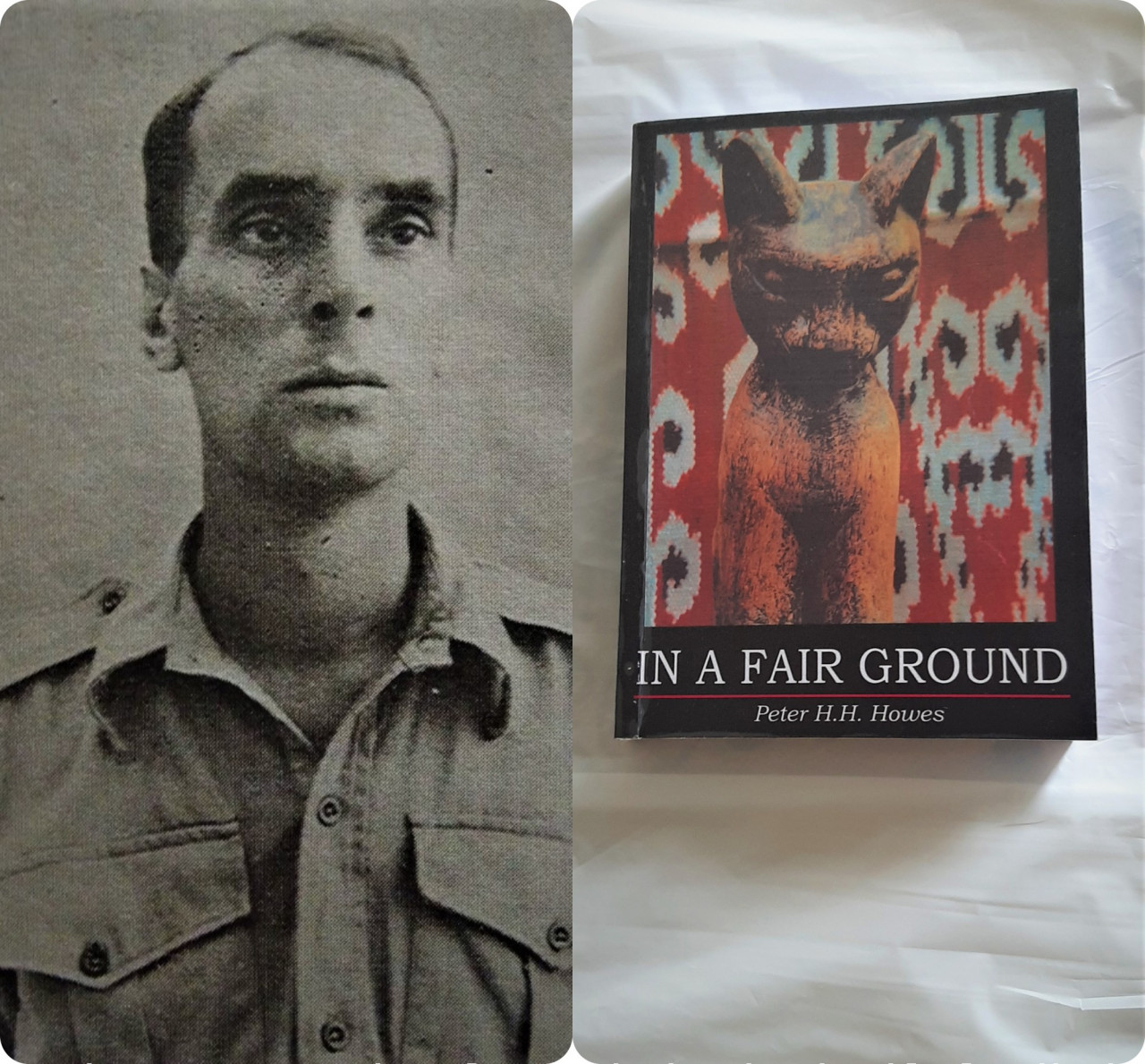
“Armed with a torch, I would walk around the church but only to find nothing. On one ‘noisy night’, I called out the boarders at the mission house and armed with two gas pressure lights, we surrounded the church. We saw nothing and heard nothing. But back in the house, the sounds came again, sharp, with a crack, as though the planks had been lashed with a whip. It was all too spooky.”
A Baroness lost and found
Gerald shares the story of an aristocratic English Baroness Angela Burdett-Coutts who went missing near a hill close to Batu Tipire. Angela, who owned a plantation and a house in Kampong Quop, went for an evening stroll but failed to return for the night.
Did the guardian spirits of Batu Tipire kidnap her out of vengeance? It is still an untold mystery today.
“But, the Baroness found her way back after hearing the tolling of the church bell for the Angelus prayers which is recited daily at 6am, 12 noon and 6pm,” says Gerald.
On being found, the Baroness said, she heard the church bell tolling and was guided back to the village by its sound. She was shaken but unharmed, save for mosquito and leech bites.
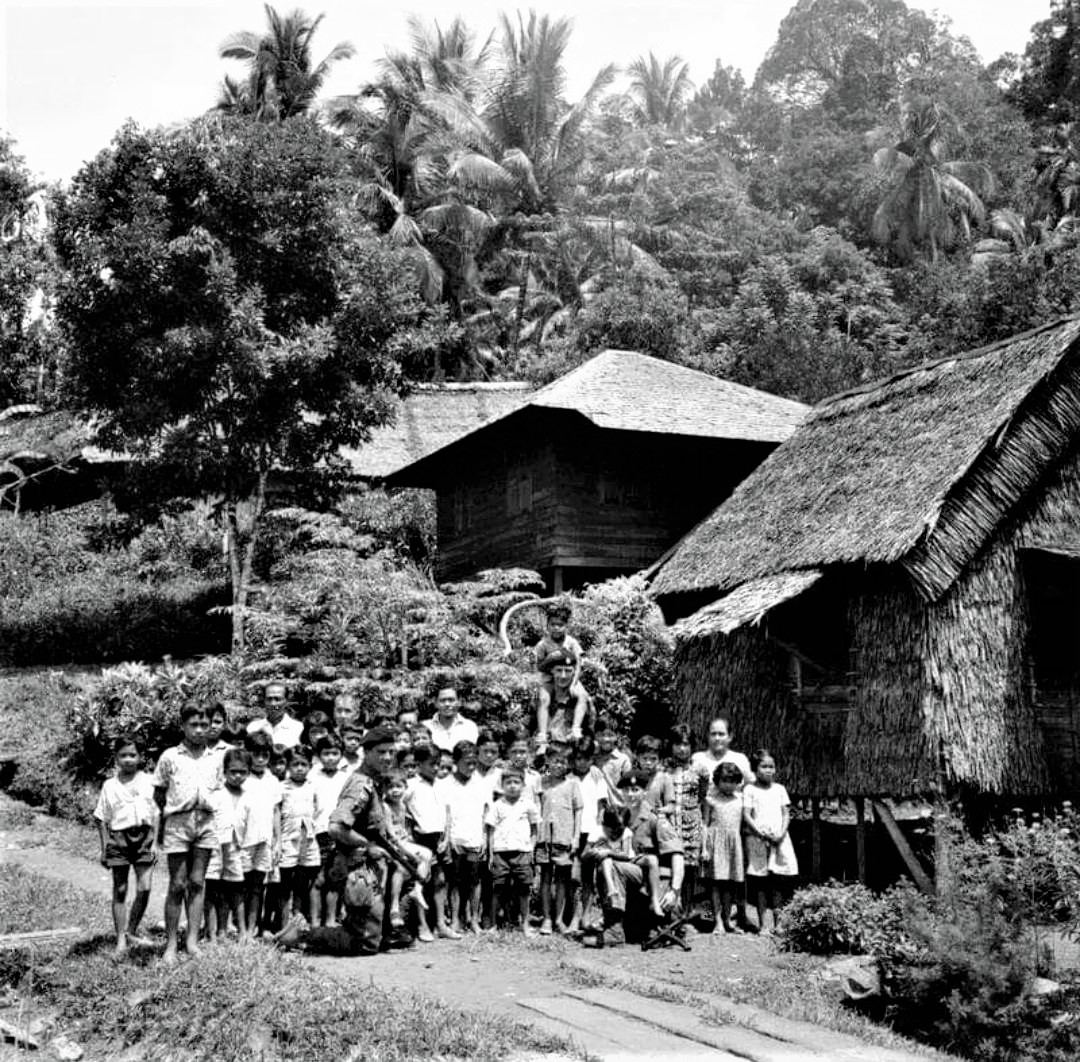
Yet, she quipped: “The sound of the bell could have been a wee bit louder.” Being wealthy and a philanthropist, she ordered for a new bell to be shipped in from England.
This quaint and antique bell is still in service today, having been transferred to the turret of the new church building next to the old church.
Over time, the seraphic beings of Batu Tipire, too, retreated to their spirit world. Probably, having been exorcised by the benediction that came from the gift of the new bell.
And perhaps, too, for the villagers of Kampong Quop, it was no big wonder “for whom the bell tolled”. – The Vibes, February 7, 2021



